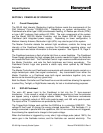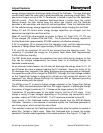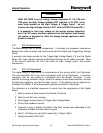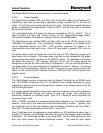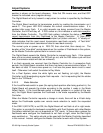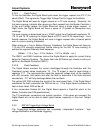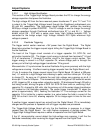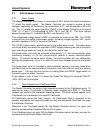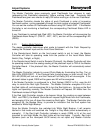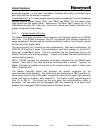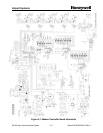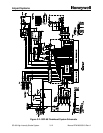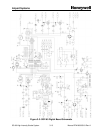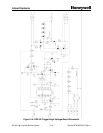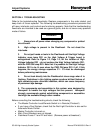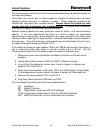
Airport Systems
SG-60 High Intensity Strobe System 3-9 Manual EPM-00000019 Rev A
The Master Controller gives previously good Flashheads four chances to reply
(addressing that Flashhead repeatedly), before marking them bad. Previously bad
Flashheads are given one chance to reply OK before moving on to the next Flashhead.
The Master Controller checks the status of each Flashhead in order of increasing
flashhead number, cycling repeatedly through the total number of selected Flashheads.
You can set the number of Flashheads monitored using DIP Switch SW1. If the Master
Controller is not monitoring a flashhead, the corresponding Flashhead Status LED is
turned off.
If any Flashhead is marked bad (Red LED), the Master Controller will de-energize the
Flashheads Alarm Relay K1 (TB3-C1, -NO1, -NC1), and turn off the corresponding LED
(DS29).
3.3.3 System Mode Selection
The master controller determines what mode to transmit with the Flash Request by
reading the Photocell input and the Front Panel Switches.
If the Remote/Local Switch on the front panel switch is set to Local, the Master
Controller will take its operating mode from the position of the Local Mode Select
Switch (Day, Twilight, or Night).
If the Remote/Local Switch is set to Remote (Photocell), the Master Controller will take
its operating mode from the analog reading of the photocell input to TB2 of the Master
Controller Board. If the photocell fails, the Master Controller will automatically select
Day Mode.
The Master Controller indicate its current Photo Mode by illuminating the Day, Twi, or
Nite LEDs (DS25-DS27). If the Photocell fails (including open or short circuit), the PC
OK LED (DS28) will turn red, and the Photocell Fail Relay (K2) will de-energize. If the
photocell status is good, DS28 will be green and K2 will be energized.
If the Master Controller is configured for a Dual System (SW2-2 is On), uses the K4
relay to control the Red Light Controller. The Master Controller energizes K4 to turn
the Red Lights off, and de-energizes K4 to turn the Red Lights on. As long as the Red
Lights are operating normally, the Master Controller will request Off Mode from the
Flashheads instead of Night Mode.
If the Red Light Controller signals a top beacon failure (by creating an open between
TB6-1 and TB6-2), the Master Controller will request Night Mode from the Flashheads,
and energize K4 to turn off down the remaining Red Lights. The Master Controller also
energizes K5, the Backup Relay, to provide an indication that the Dual system has
switched to White Night Backup.
Once the Master Controller has switched into White Night Backup, it will remains
latched in that mode until switched into Twilight or Day Mode (either automatically or
manually). If the Red Light Controller indicates is ready (DS36 is lit) at the next
transition to into Night Mode, the Red Lights will be tried again. Typically, Red Light
Systems (such as the Honeywell 9LCA series) do not report any Beacon Failures



